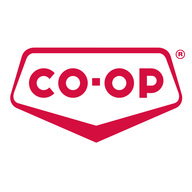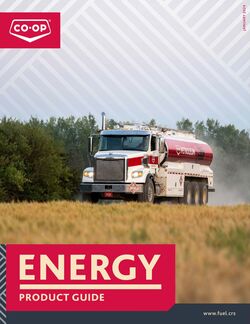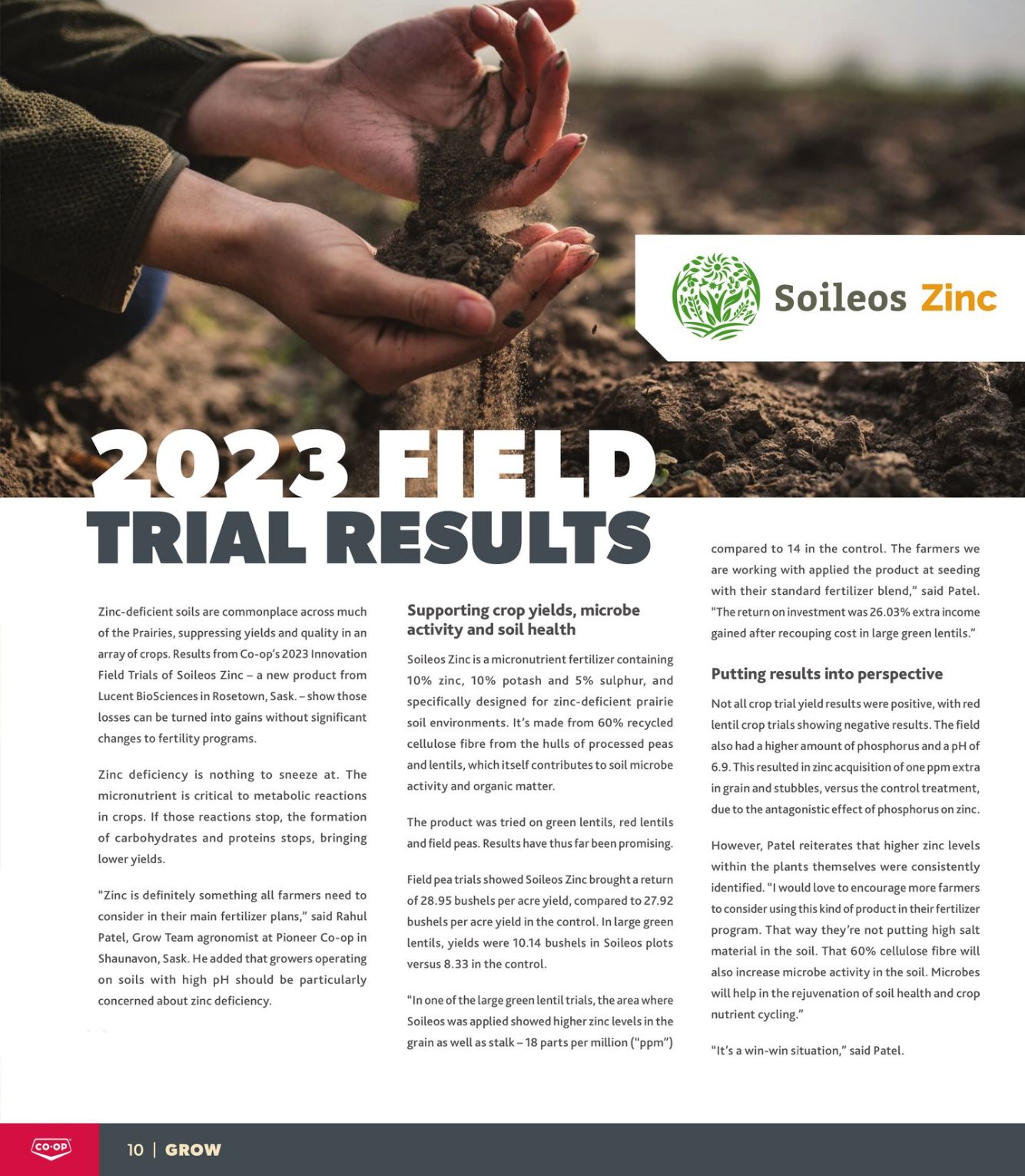













Products in this flyer
X L Zinc-deficient sols are commonplace across much ofthe Prairies, suppressing yields and quality in an array of crops. Results from Co-op's 2023 Innovation Field Trials of Soileos Zinc - a new product from Lucent BioSciences in Rosetown, Sask.-show those losses can be turned into gains without significant changes to fertility programs. Zinc deficiency is nothing to sneeze at. The micronutrient is critical to metabolic reactions in crops. If those reactions stop, the formation of carbohydrates and proteins stops, bringing lower yields “Zinc is definitely something all farmers need to consider in their main fertilizer plans,” said Rahul Patel, Grow Team agronomist at Pioneer Co-op in Shaunavon, Sask. He added that growers operating on soils with high pH should be particularly concerned about zinc deficiency. RESULTS Supporting crop yields, microbe activity and soil health Soileos Zinc is a micronutrient fertilizer containing 10% zinc, 10% potash and 5% sulphur, and specifically designed for zinc-deficient prairie soil environments. It's made from 60% recycled cellulose fibre from the hulls of processed peas andlentils, which itself contributes to soil microbe activity and organic matter. The product was tried on green lentils, red Lentils andfield peas. Results have thus far been promising Field pea trials showed Soileos Zinc brought a return of 28.95 bushels per acre yield, compared to 27.92 bushels per acre yield inthe control. In large green lentils, yields were 10.14 bushels in Soileos plots versus 8.33 in the control. “In one of the large green lentiltrials, the area where Soileos was applied showed higher zinc levels in the grain as well as stalk- 18 parts per million (‘ppm") compared to 14 in the control. The farmers we are working with applied the product at seeding with their standard fertilizer blend,” said Patel. “The return on investment was 26.03% extra income gained after recouping cost in large green lentils." Putting results into perspective Not all crop trial yieldresults were positive, withred Lentil crop trials showing negative results. The field also had a higher amount of phosphorus and a pH of 6.9. Thisresulted in zinc acquisition ofone ppm extra in grain and stubbles, versus the control treatment, due to the antagonistic effect of phosphorus on zinc. However, Patel reiterates that higher zinc levels within the plants themselves were consistently identified. “| would love to encourage more farmers to consider using this kind of product in their fertilizer program. That way they're not putting high salt material in the soil. That 60% cellulose fibre will also increase microbe activity in the soil. Microbes willhelp in the rejuvenation of soil health and crop nutrient cycling.” “It's a win-win situation," said Patel.
| Name | Details |
|---|